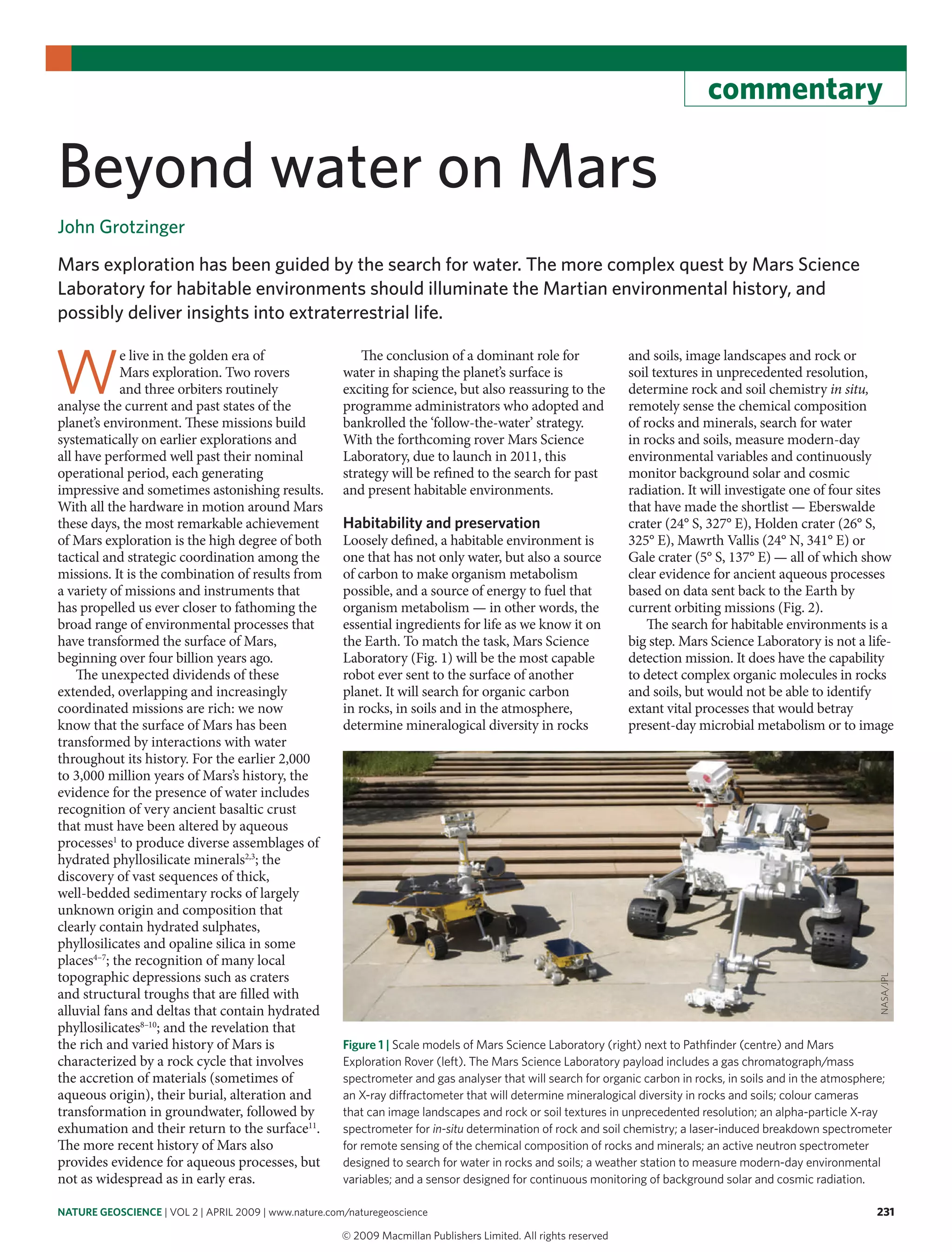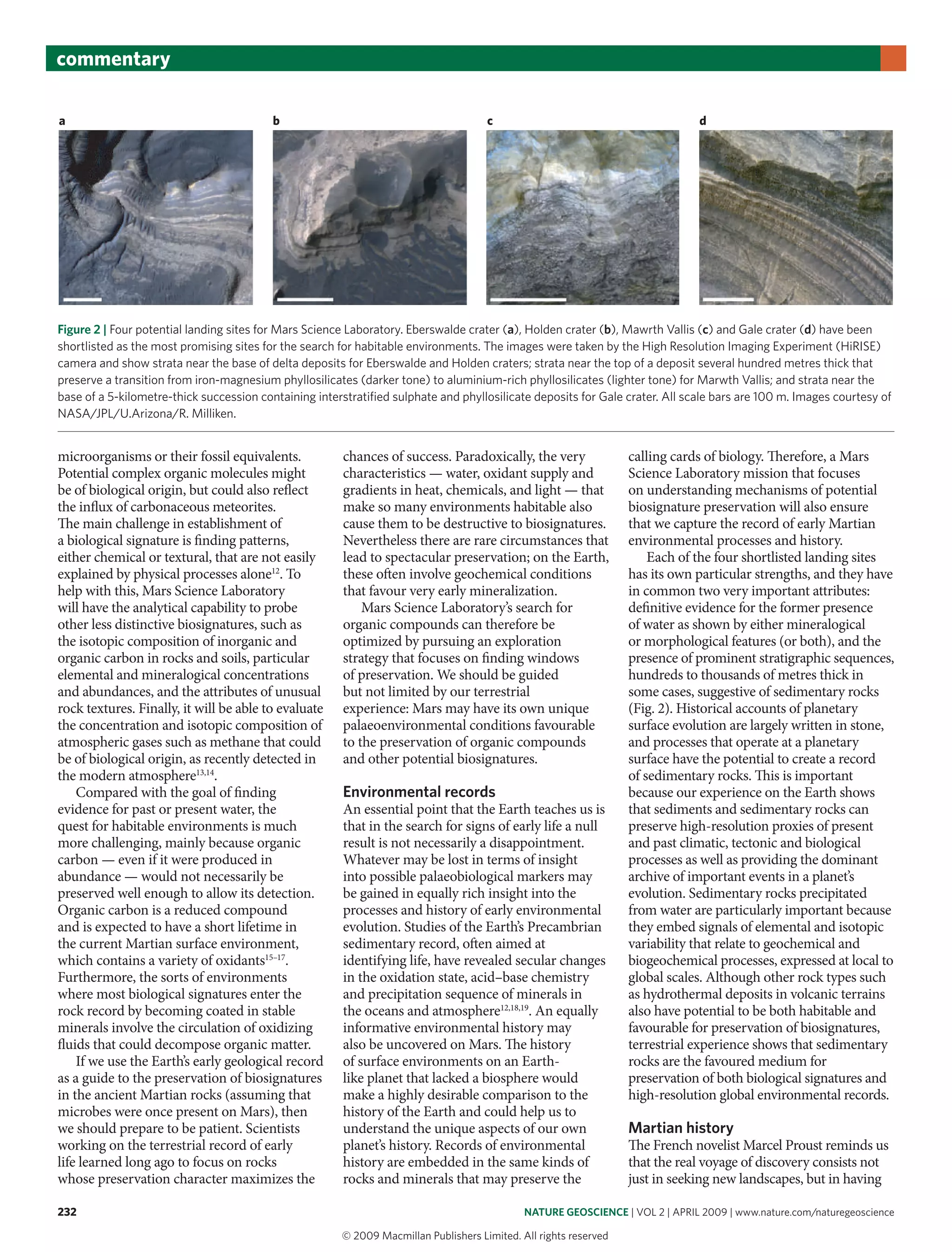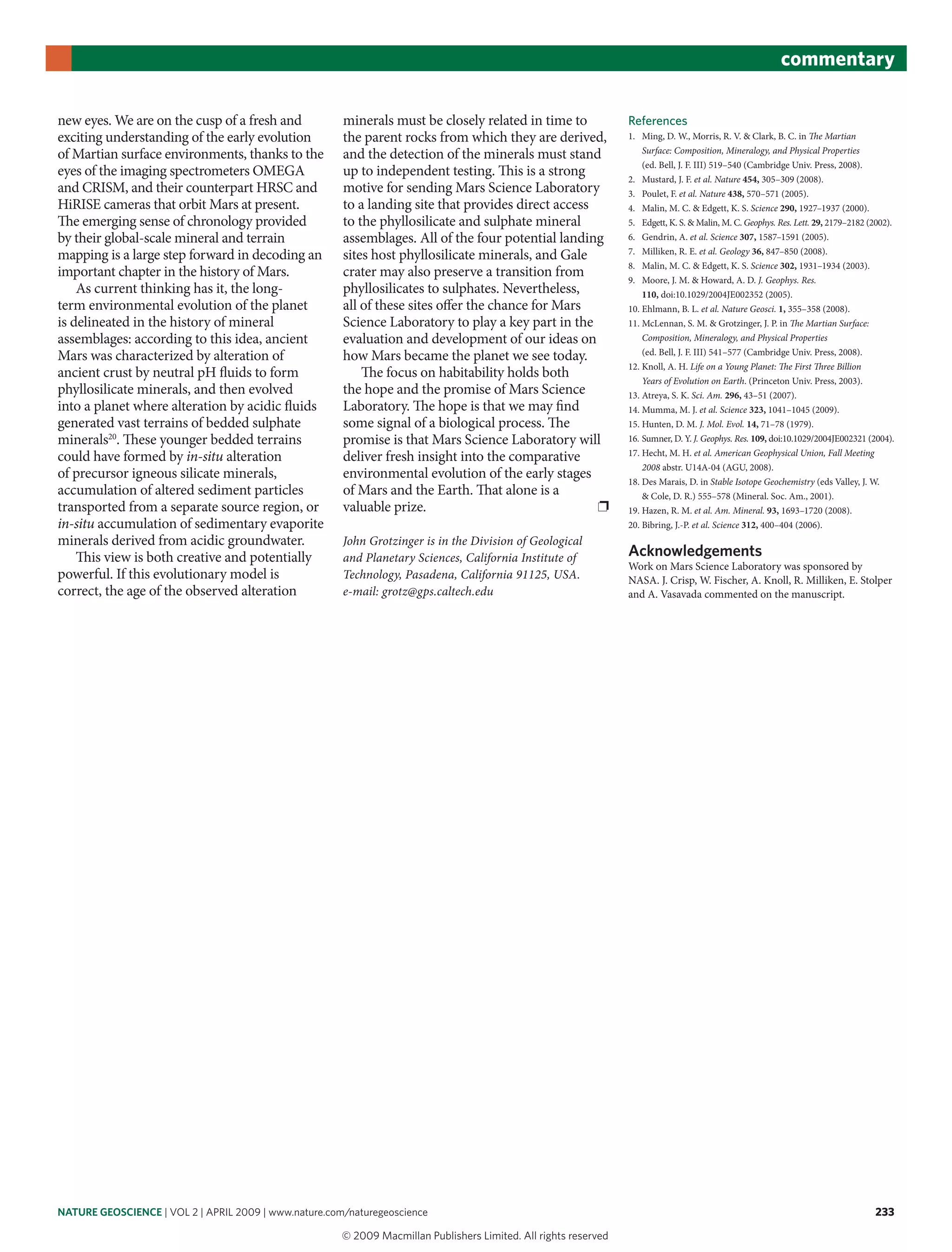Mars exploration has focused on the quest for water, while the Mars Science Laboratory aims to explore potential habitable environments on Mars, marking a significant step in understanding the planet's environmental history and prospects for extraterrestrial life. The mission will utilize advanced technology to analyze organic carbon, mineral diversity, and environmental variables to provide insights into Mars' geological processes and possible biosignatures. The selected landing sites, rich in evidence of ancient aqueous activity, are expected to reveal valuable insights into both Mars and Earth's early environmental and evolutionary pathways.


